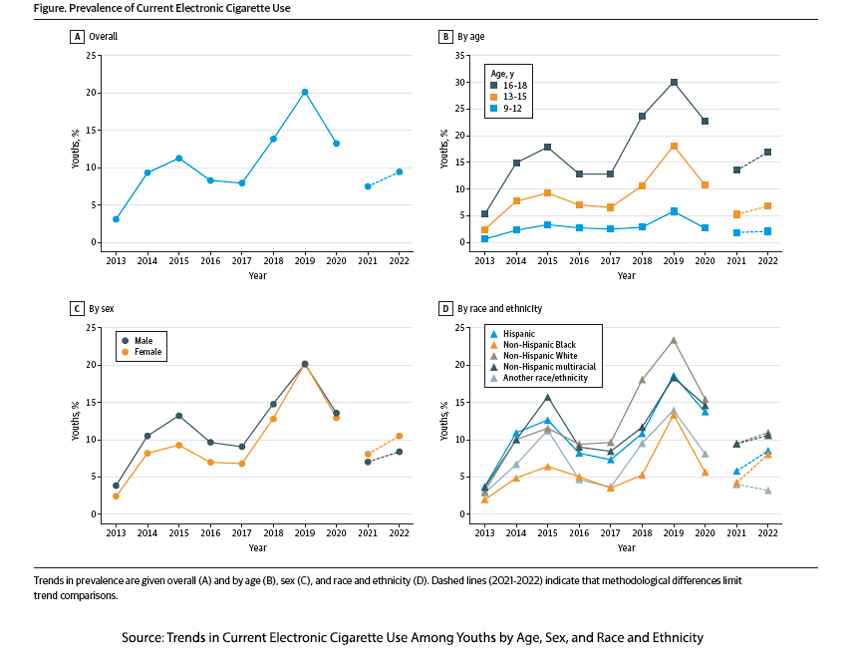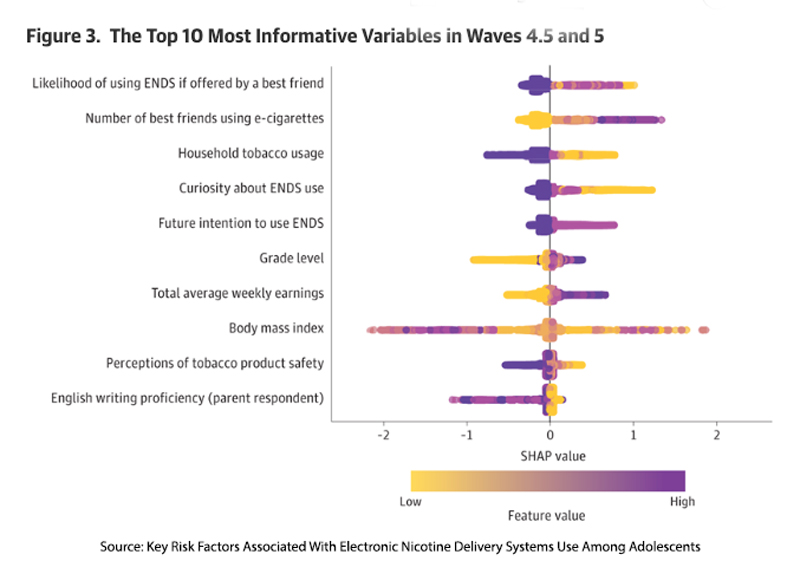The data comes from the National Youth Tobacco Survey (NYTS), an annual, repeated cross-sectional survey of 186,000 US middle and high school students providing the current snapshot. Current e-cigarette use was defined as past 30-day use; age, race, and ethnicity were all self-reported. The missing data points from 2020 are due to COVID interrupting the survey.

All groups show significant reductions since 2019, returning to levels seen nearly a decade previously.
- Current overall use is at roughly 9%, down from a high of 20% and up from an initial low of 3%
- Males were greater users in the past; more females have taken up the torch lately.
- Use among White youth continues to decline, while the message is not resonating for Hispanic or Black youth, where the prevalence has risen slightly since 2021.
- The group with the most significant incidence of smoking remains non-Hispanic American Indian/Alaska Native adults at 16% - double any of these reported numbers.
The researchers report this information as “still concerning levels”; after all, only zero use would be not concerning. We can look to an earlier study to identify the risk factors for using e-cigarettes. It is based on the Population Assessment of Tobacco and Health, “a nationally representative longitudinal survey designed to monitor tobacco use and its health effects among US youths and adults.” Using the latest tool in data mining machine learning (an artificial intelligence variant), researchers identified the top reasons why tobacco-naïve youth in the prior survey (Wave 4.5) would have tried an electronic nicotine delivery system (ENDS), an e-cigarette in the current survey (Wave 5).

As it turns out, the most salient reasons to vape up were because your friends vaped or offered you an e-cigarette or tobacco was used in the home. This finding is similar to the social milieu associated with overweight and obesity.
While there have been positive trends in reducing e-cigarette use among US youth since 2019, challenges persist, especially in addressing different demographic groups. The data underscores the importance of targeted interventions and continuous efforts to understand and mitigate the social factors contributing to youth initiation of e-cigarette use.
Source: Trends in Current Electronic Cigarette Use Among Youths by Age, Sex, and Race and Ethnicity JAMA Network Open DOI: 10.1001/jamanetworkopen.2023.54872
Key Risk Factors Associated With Electronic Nicotine Delivery Systems Use Among Adolescents JAMA Network Open DOI: 10.1001/jamanetworkopen.2023.37101



